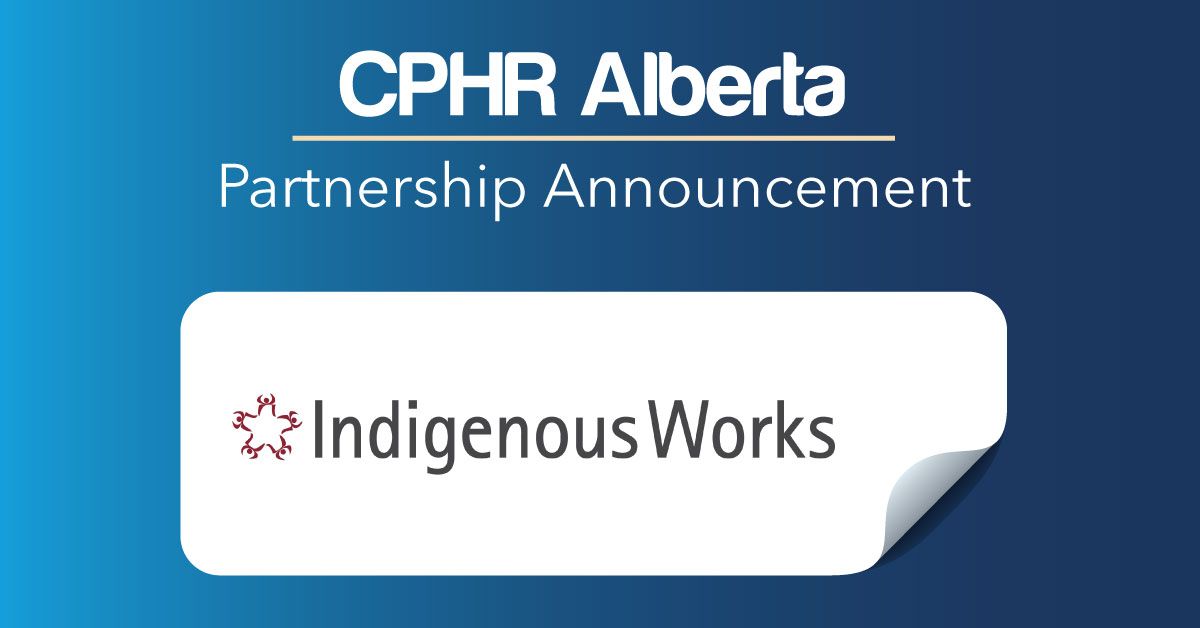
CPHR Alberta Announces Partnership with Indigenous Works

CALGARY, Alberta – CPHR Alberta, a professional association dedicated to strengthening the human resources profession, is excited to announce a new partnership with Indigenous Works.
Indigenous Works (IW) has 25 years of experience in Indigenous employment and human resource development. Under its former name, the Aboriginal Human Resource Council, IW has worked extensively with Indigenous and non-Indigenous organizations in the public and private sectors. Their depth of experience offers a unique set of perspectives and cultural understandings which provide a bridge between employer and Indigenous realities.
IW offers many programs and services including:
- Leadership Circle membership program
- Navigating Employment program
- Indigenous Works’ Employer of Choice program
- Luminary Academic Partners membership program
- Instructor-lead Virtual Training
- Advisory Services & Consulting
- Inclusion Works 3-day annual in-person fall event
Established in 1998, IW is a national not-for-profit organization with a mandate to advance the engagement of Indigenous Peoples in Canada’s economy. Indigenous Works is dedicated to its mission to close the socio-economic gap, helping First Nation, Métis and Inuit people move closer to the standard of living enjoyed by the majority of non-Indigenous Canadians.
IW has a methodical and systems-based approach to developing effective Indigenous employment and inclusive workplace inclusion strategies. Their organization is ISO certified, one of only a few Indigenous organizations in Canada to have attained that certification.
As part of the partnership, CPHR Alberta members will receive Indigenous related learning content. Supporting HR professionals to broaden their knowledge, gain practical tips and earn CPD hours. CPHR Alberta members will receive 15% discount on a series of valuable learning webinars.
Click here to view a full list of webinar topics available in 2023.
To kick off our partnership, CPHR Alberta members can join the first session on February 23rd – Importance of Indigenous Resource Groups and the Benefits to your Organization by registering here.
“We are proud to partner with Indigenous Works to offer our members the opportunity to grow their learnings in workplace inclusion by acquiring the tools to create stronger indigenous inclusion strategies that includes important and productive relationship building”. Ioana Giurca, CEO, CPHR Alberta.
Learn more about Indigenous Works at www.indigenousworks.ca
The views and opinions expressed in this blog post belong solely to the original author(s) and do not necessarily represent the views and opinions of CPHR Alberta.





